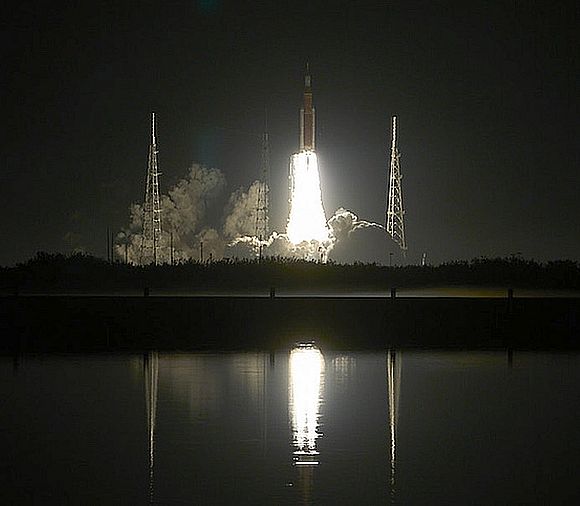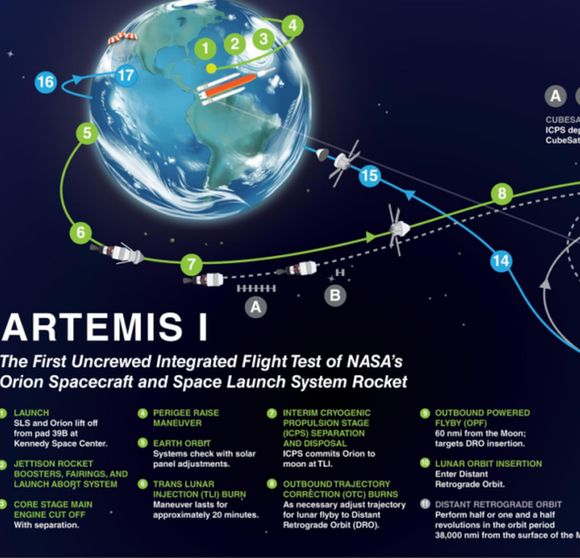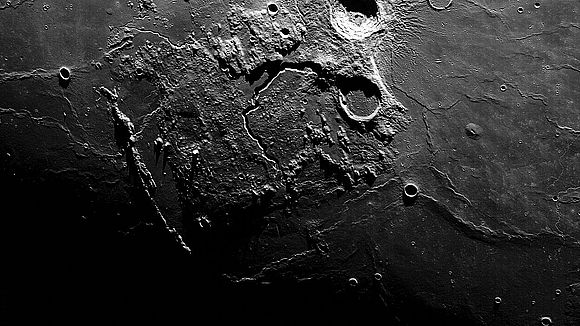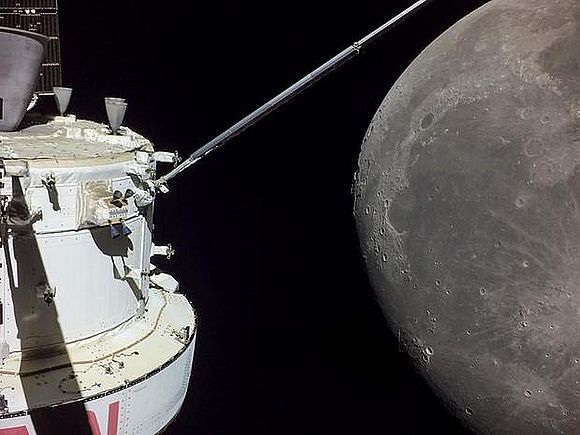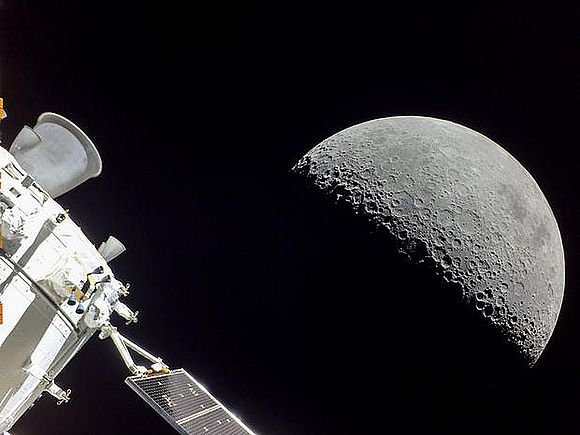Following a 25-day mission to the Moon, lunar orbit, and return to Earth, NASA's Artemis 1 mission came to a successful conclusion on Sunday (Dec. 11) with splashdown of the uncrewed Orion Capsule off Mexico’s Baja California coast. Fittingly, splashdown took place 50 years to the day since the final Apollo 17 Moon landing occurred.
Lifted atop of NASA’s SLS rocket on Nov. 16, the most powerful launch system currently available, the crew rated Orion capsule travelled a a total of about 1.4 million miles (2.25 million kilometers) and reached the furthest distance from Earth a crew rated craft has to date.
The safe splashdown of the Orion capsule in the Pacific Ocean capped the complex and delayed Artemis 1 mission, which is an early test of returning humans back to the Moon.
Lunar surface captured by Orion's onboard optical navigational camera just 130 km below.
(click for larger image)
During the mission, the uncrewed Orion capsule entered lunar orbit, carried out two flybys of the Moon — swooping as low as 80 miles (130 km) above the cratered lunar landscape — and set a record for the farthest a human-rated craft has ever been from Earth, some 270,000 miles (434,000 km). Orion also stayed in space longer than any other crew-rated spacecraft that didn’t dock with the ISS.
Some aspects of the mission did not however go to plan, chiefly relating to Orion’s payload of small low cost satellites called CubeSats, 3 of which are lost, although seven others are still 'alive'. The failures were not entirely unexpected with no redundant systems to compensate for problems and failures built into the Satellites. Other minor anomalies included an unexpected loss of communication for 47 minutes on flight day eight. Orion travelled back toward Earth at 25,000 mph (40,000 km/h), carrying out one brief atmospheric “skip manoeuvre” to help obtain an optimal trajectory before plunging into Earth’s atmosphere. Once three huge parachutes had been deployed, the craft was slowed to a speed of about 20 mph (32 km/h) for splashdown. The capsule will return to the Kennedy Space Centre where flight data will be analysed and a thorough inspection of the capsules heat shield carried out which experienced temperatures of more than 5,000 degrees Fahrenheit (2760 degrees Celsius) during re-entry.
The exact date window of the Artemis 2 launch has not yet been finalised, but this mission will carry humans back to the Moon for the first time in a half-century. However, Artemis 2 will not see a lunar landing. It won’t be until Artemis 3, scheduled for 2025, that humans again set foot on the surface of the Moon.
Visit https://www.nasa.gov/artemis-1
Images- courtesy of NASA
- Log in to post comments

